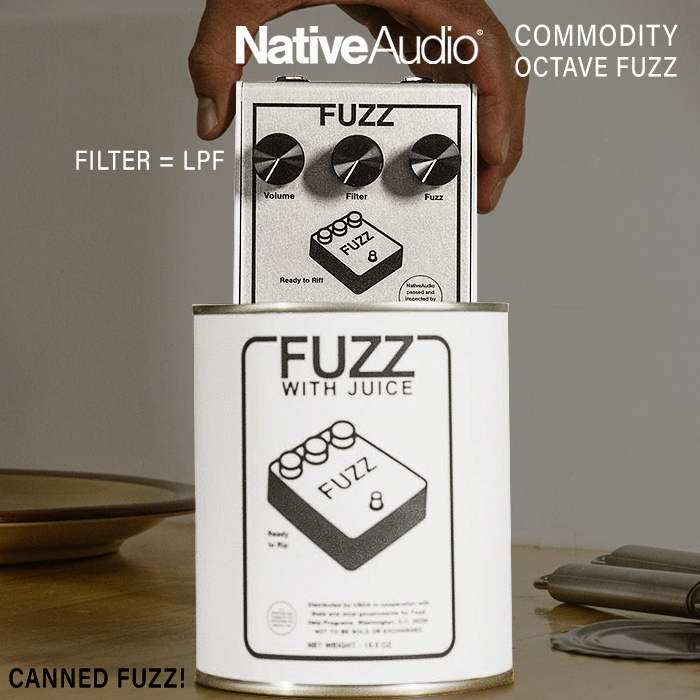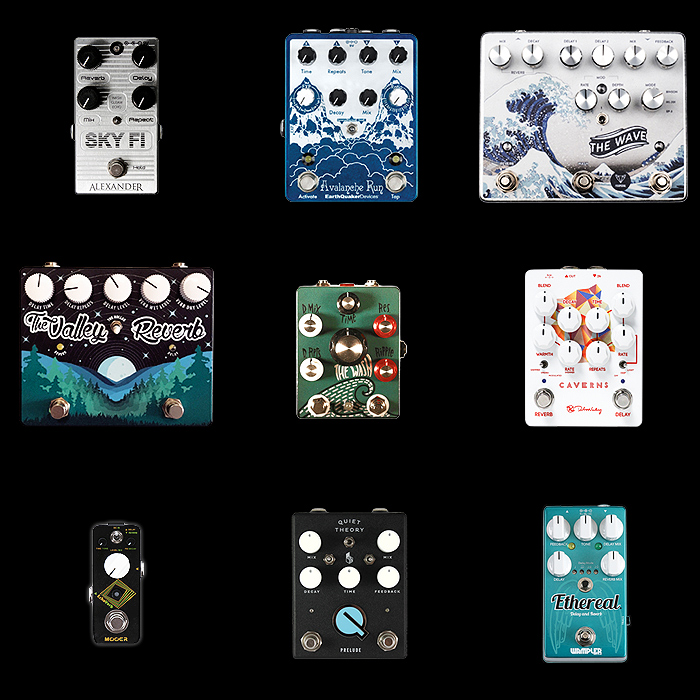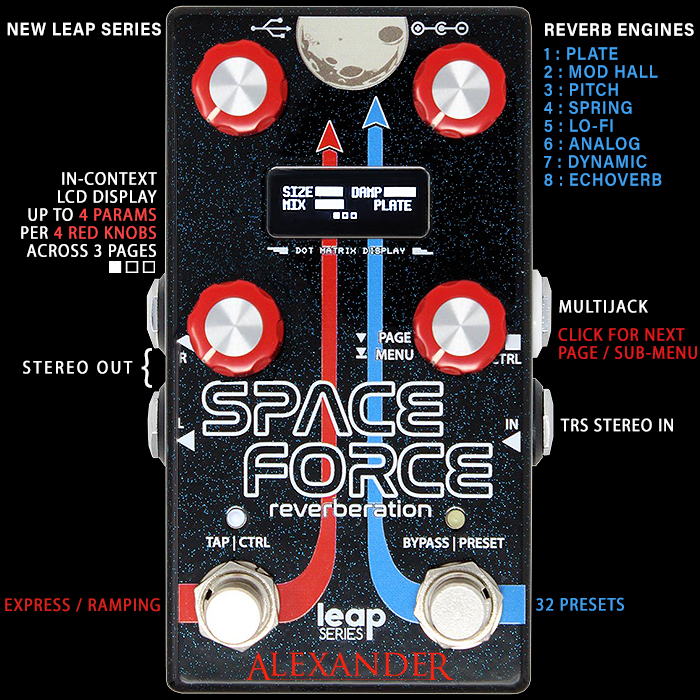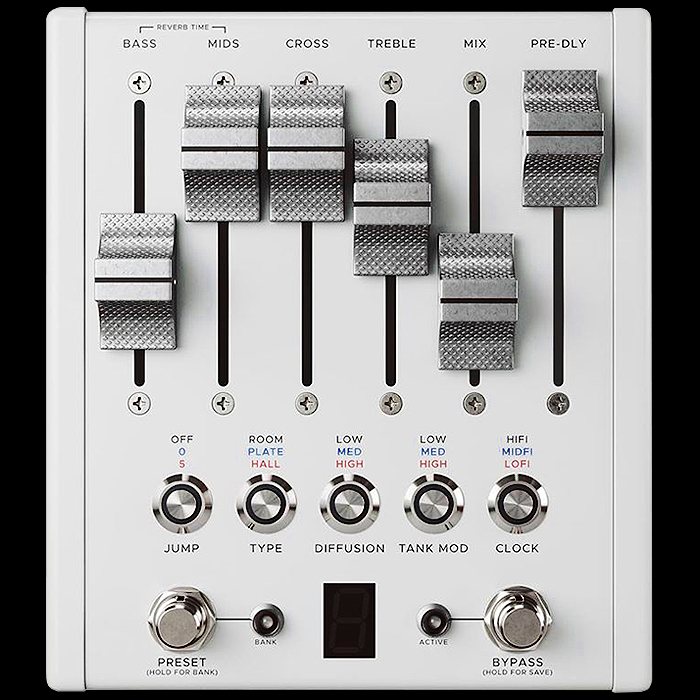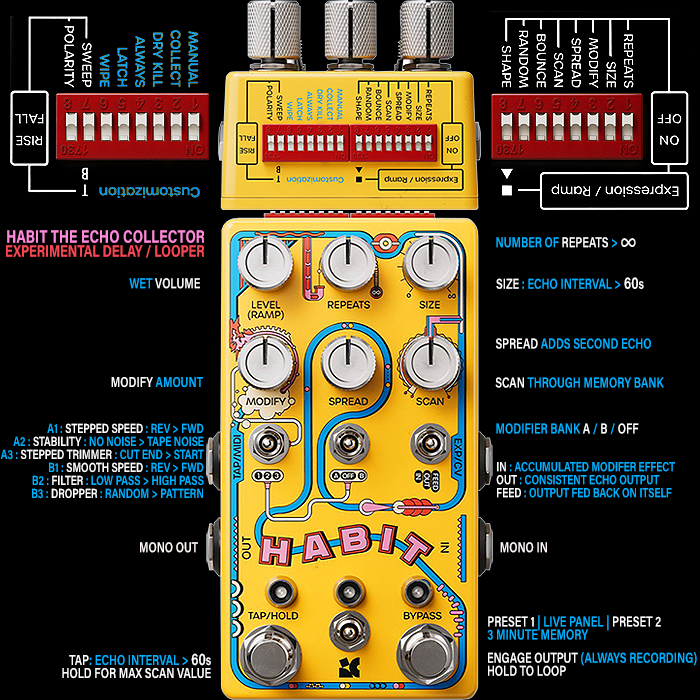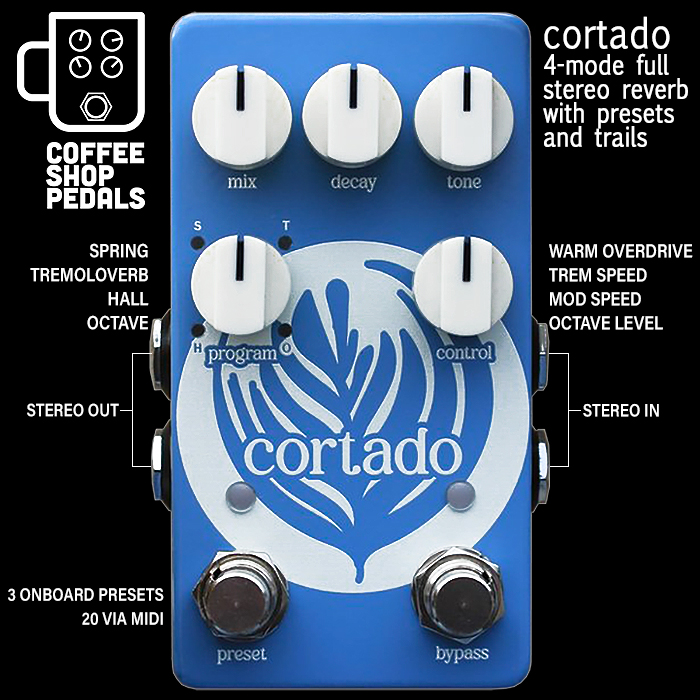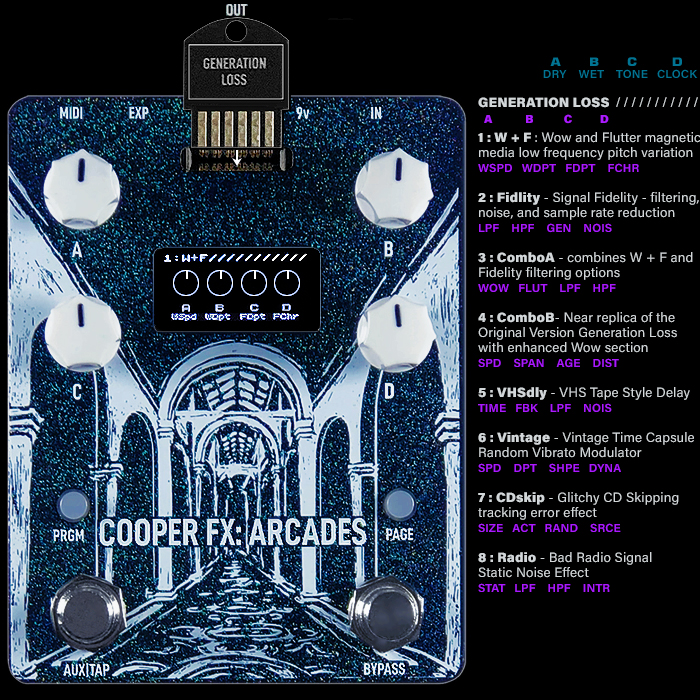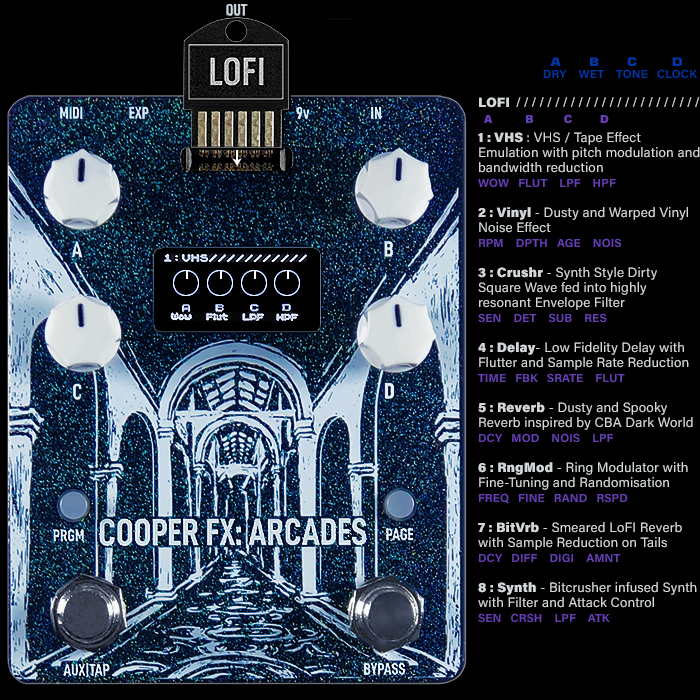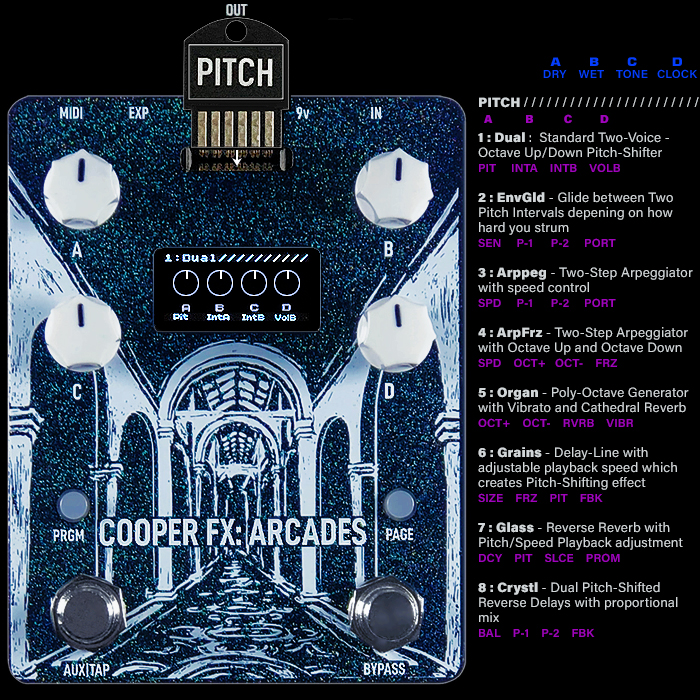2020 Best New Reverb Workstation Pedals - The Year of Reverb!

As noted elsewhere, 2020 has sort of turned out to be the year of Mega Reverbs as such - with several super appealing pedals launched into the category this year. I see them as largely 2 types based on this selection - multi-mode, and multi-variability - the latter category which includes the Eventide Blackhole and Gamechanger Audio Light Pedal - delivers extended variations based on a singular type of Reverb.
The most recent proper That Pedal Show Episode (as per Final Thoughts below) featured 3 of the heavy hitters - CBA CXM 1978, Eventide Blackhole and Strymon NightSky. Where I felt Dan and Mick leant a little too much into the admittedly magnificent CXM 1978, but rather to the disservice of the Strymon NightSky which can indeed do more vanilla styles of Reverberation. While I largely agreed with their conclusions in that that CXM 1978 is the most Pristine sounding - as it jolly well should be at nearly 900 groats.
I actually own 3 of these pedals - the Cooper FX Arcades (Reverb Card), EHX Oceans 12 Dual Channel Reverb, and of course the Strymon NightSky, which is currently my favourite and on active duty in my chain.
I’ve fairly recently decided that I will also be getting the CXM 1978 sometime next year - I obviously need to save up for that a little, while I will also likely be acquiring the Flamma FS02 too for incidental rotation and experimentation.
The symmetry of the article means that I leave out the Earthquaker Devices Afterneath V3 - which I’m not entirely convinced fits into this category of workstations. While the Mooer 8 Series Reverb definitely deserves mention for its 7 modes in tiny form factor - Room, Hall, Church, Cave, Plate, Spring and MOD - with 6 controls and Presets - in such a tiny package. There’s certainly some degree of overlap here with the Flamma FSO2 - which we will touch on when we come to that variety.
Reverb has always been an essential component for me - I started on the Strymon BigSky, then went to Boss RV-500, next Source Audio Ventris, before a relatively brief excursion with the Electro-Harmonix Oceans 12 - and now of course the current active incumbent and favourite - Strymon NightSky. So a kind of full-circle on Strymon IIsuppose. I was interested in a GFI Specular Tempus for a period - and might check out the V2 variety of that if that arrives next year or the year after. By and large there hadn’t been a lot of movement on the Reverb Workstation front until the plethora of new arrivals this year. The Meris Mercury 7 and Empress Reverb have been on my wishlist too over the years, but are now a little further back in the pecking order!
For me the Strymon NightSky is a new kind of modular building block Reverb Workstation - where you can choose as many or as few elements as you feel comfortable with. That and the CXM 1978 are probably the most impressive of the new Reverbs, not to diminish the EHX Oceans 12 - which is one of just 3 proper Dual Channel Reverbs - alongside the Boss RV-500 and Source Audio Ventris.
I’ve pretty much decided that the NightSky will be my main squeeze, with the CXM 1978 on supplementary duties once that arrives. All choices here are pretty valid though depending on exactly how you wish to deploy them.
Pedals are listed in alphabetical order by brand as usual :
Chase Bliss Audio and Meris Automatone CXM 1978 Studio Reverb - $900/£900
Even though Andertons list availability from December 9th, my understanding from Joel's recent announcement was that early / 1st batch direct pre-order units are still in the process of being delivered right now - with some still to go out, while Dealers will be getting the second batch - which is likely to be ready for end of the year at the very earliest, but most likely early next.
The £900 price tag will be a distinct disincentive for many - but as recently demonstrated by That Pedal Show - this is a truly magnificent sounding Studio Reverb - as it should be for its cost. Collaborators Meris are responsible for the DSP programming and in fact the circuitboard manufacture on this occasion - which means a more even profit-share with Chase Bliss Audio - and thus a rather higher price, than the already lofty £750 for the Preamp II equivalent.
Those that have experience of and obviously love the Preamp II know that it is one of the most usable and intuitive formats ever created - as best exemplified by how quickly technophobe Mick Taylor adapted to the format. My most recent CXM 1978 article covers the original Lexicon 224 inspiration and the key technicalities of the pedal.
The short rundown is 3 core modes / types :
- Room
- Plate
- Hall
With 11 controls and 30 presets onboard. One of the unique things about the pedal is the variable control you have over the mid and low frequencies / Decay Time and the crossover point between the two. You can vary Clock Rate and Pre-Delay, Modulation Depth and Degree of Diffusion too. This is really a superb ultra high fidelity Studio Reverb - which is best described by the word 'Pristine'.
It's every bit as great as those legendary high fidelity Lexicon rack-mounted Studio Reverbs - and much more intuitively controllable most ways.
I will most definitely be getting one of these sometime next year - while it will be understudy to the Strymon NightSky for the most part - as that simply does somewhat more.
Cooper FX Arcades Modular Multi-FX with Reverb Card - $329/$299
I've obviously recently just concluded an overview / review of this fabulous slightly otherworldly reverberator. This most certainly is not the right box if you're seeking Pristine CXM 1978 varieties. This is what I call a Character or Ambient Reverb - where each Mode / Voicing is intended to be far more prominent in the mix - versus an always-on background Reverb.
There are some quite distinct and texturally interesting reverse onboard with Arcades Reverb Card - and all of them are usable and musical - but you often need to adapt your playing style to fit those algorithms.
You get 8 Modes onboard :
- ModPit : Pitch-Modulated
- VHS : Video Tape Style
- Shim : Shimmer
- EnHold : Envelope Filter Freeze
- Multi : Multi-Tap Reverb with Diffusion and Audio-drop
- Flange : Classic Weirdo-style Flange on Tail
- Grnule : Granular Sliced Reverb
- Arp : Arpeggiated Undulating Reverb
You get 8 controls - 4 variable digital parameters, and 4 analog parameters - Dry, Wet, Tone and Clock-Rate. And you get 8 Presets which are saved to the Card.
A slightly more unusual and non-vanilla Reverb - which for many will be on supplemental duties versus core. But delivers some very interesting and usable flavours - probably slightly more for the adventurous minded - and doesn't do the straight-up vanilla reverbs like the Strymon NightSky can.
Death By Audio Rooms Stereo Reverberator - £429
I've always conceptually been a fan of Death by Audio pedals - but some of there very best like this Rooms Reverb and the Evil Filter - come in somewhat awkward outsized enclosures - which knocks them down a peg or two in practical usability.
Nonetheless this is a great new Reverb Workstation with actually a good mix of of rather more vanilla and unusual varieties - with 6 modes in fact onboard :
- Room : as it says
- Digit : Reverb with Delay Time and Feedback
- Peak : Resonant Filtered Reverb
- Gate : Gated Reverb
- Wave : Chorus / Vibrato Wave-Modualated Reverb
- Gong : Aliased Ring Mod style Metallic Reverb
You get 8 controls - 5 Primary - Time, Frequency, Depth, Dry, FX Volume, and 3 Secondary - Frequency, Depth and Time - which are activated by the second Alt footswitch.
So some cool modes and clever controls onboard - but alas loses some point through lack of presets.
Electro-Harmonix Oceans 12 Dual-Channel Reverb - £259
I've already mentioned that I regret I didn't get as much time with the unit as I would have liked - as I was so excited by the new Strymon NightSky - I just had to get that into the chain as quickly as possible - as a result I didn't get fully under the skin of this pedal as such - while I enjoyed it enormously while in active rotation. Although some of those mini controls are a little fiddly in daily use - and what seems clear on the blown up picture of the pedal is somewhat a lot more obscure with relatively tiny writing - when operating in somewhat low light. You almost need a magnifying glass to see what's what - or at least I do!
Nonetheless this is a tremendous far-ranging and extended proper Dual-Channel Reverb Workstation with actually no less that 29 Reverb Modes across 12 Engine Types (2-3 Modes per Engine). It's one of only 3 parallel Dual Channel Reverbs - alongside the Boss RV-500 and Source Audio Ventris - as far as I'm aware.
Its 12 Engines are :
- Room
- Spring
- Plate
- Reverse
- Echo
- Trem
- Mod
- Dyna
- Auto-Inf
- Shimmer
- Poly
- Resonant
You have 11 further controls including Param 1 & 2, Expression Mode, Momentary Mode, Tails, Function/Alt, Mode (Sub-mode 1-3), FX Level/Inf Level, Predelay / Send Lvl, Time / Lo-FI and Tone / Tide. Where each mode can be adjusted for Lo-Fi output and Tide Stereo Ambience. It actually probably works well enough with just the 2 footswitches, but is better utilised with an external 3-footswitch add on - where I've found the GFI Triple Switch to be the most compact and usable format.
This is such a hugely capable unit and so tiny relative to its process - and actually very well priced to. I've recommended this to several people - and it's truly a really high quality Reverb Workstation with more functionality and features on tap than most. The algorithms aren't quite as pristine as the CXM 1978 - but they are all really high quality.
Eventide Blackhole Reverb - £279
An actually very decent multi-variable Reverb based around Eventide's immense Blackhole Algorithm - as first appeared on the Space Reverb Workstation - and is onboard the H9 Max too. So for H9 Max owners something of a surplus requirement as we already have all that goodness.
In this format though - which is well priced - you get the most variability from that single algorithm - courtesy of 6 controls knobs plus alt button and secondary parameters and 5 onboard presets.
The parameter controls being Mix, Gravity / Delay, Feedback / Q, Size / Depth, Lo / Rate, and Hi / Out Lvl. So it's actually rather simply to use and for maximum impact. In this scale of tings though this is possibly the most vanilla in many ways and one of the least versatile overall. That said the Blackhole Algorithm is a Magnificent Classic of the type - and this gives relatively easy access to that in a very handy and relatively compact form factor.
Because of my H9 ownership - this is actually entirely surplus to my own requirements - but I can see how it could be just the right choice for some players - for around the same price though - you get a lot more bang for your buck courtesy of the EHX Oceans 12. And in a year of Reverb innovations - this is kind of disappointing to most existing Eventide fans - who already own the Blackhole Algorithm in one of its many guise - and would have liked to have seen something a little more different and creative.
lamma FS02 7 Mode Stereo Reverb - $88, currently discounted to $68
I have a separate forthcoming article on all 6 current Flamma pedals - which are genuinely doing something innovative for the budget-end digital type pedals. I have a feeling that these are somehow related to Mooer - as the algorithms here are quite similar to those on the Mooer 7 Series - or namely :
- Room
- Hall
- Church
- Cave
- Plate
- Spring
- Mod
All very relatable fairly vanilla classic reverb styles. Controlled by 5 parameter knobs - Level, Hi-Cut, Lo-Cut, Decay and Pre-Delay - and as mentioned with 7 presets onboard - one for each Mode/Type.
This is just incredibly good value right now at just $68. And this brand seems to be steadily innovating. I personally would have preferred a second footswitch here to switch presets - rather than having to use the small Save/Select button - which really isn't that convenient when stood up.
That this is full stereo ins and outs - with presents and all for just just $68 currently is somewhat incredible!
This is the most interesting budget range for a while - and so much more interesting than the recent Tone City Compact range - which currently retails for £60. I will likely snap up several Flamma types - for secondary use and experimentation mostly - and benchmarking - I can see those coming in handy in several ways. And if / when they add the second footswitch - those will really become essential.
In many ways they are the same sort of concept as the Mooer 7 Series - but with more tactile controls. Will be interesting to see how they develop. They have more scope for evolution vs the tiny Mooers - but virtue of the greater surface area.
Gamechanger Audio Light Pedal Optical Spring Reverb - $299/£299
This seems to have disappeared off the radar somewhat after a fairly sizeable Winter NAMM fanfare - with 1,000 units set to be made available by Spring. But I guess the early demos weren't quite sufficiently inspirational and Gamechanger have likely gone partway back to the drawing board or engineering workshop even. All the recent noise has been about the new and suitably impressive Whirling Mechanical Motor Synth - which has largely been very well received - and has been smartly demo'd by a number of the leading lights in the synth world.
The Light Pedal is essentially a fully authentic 3-Spring Tank Reverb with additional smarts via Infrared Optical Sensor - which captures more Spring Movement and Transients to render a richer and more detailed Spring Reverb Sound with several enhanced modulations possible by combining the traditional and innovative technologies employed.
For whatever reason though the early demoes were not sufficiently inspiring - so I'm not sure what happened to the early take-up of the pedal - or whether it is even still a going concern - which I will assume it to be until I hear otherwise.
This is similar in concept to the Evenite Blackhole in being a Multi-Variate Reverb Workstation - based around maximum manipulation and enhancement of a single Core Reverb Type - here obviously Spring Reverb.
There are essentially 6 different modes here :
- Optics
- Sweep
- Trem
- Reflect
- Feedback
- Harmonic
And there are 7 further parameter controls - Dry, Spring, Optical, Tone, Control, Drive, and Envelope. As it is a proper Spring Tank Reverb it has a number of practical challenges including size / format and knock-noise. Also with that many variable controls - this is really a pedal that would benefit from onboard Presets.
I feel that Gamechanger have some work to do here - and this will likely be more attractive in the eventual V2 iteration whenever that materialises. It's a great idea, and there's some really smart innovation and engineering here - which is what Gamechanger excel at - but they don't always have key usability practicalities in the frame. Definitely an appealing prospect though.
Red Panda Context V2 Reverb Workstation - $299/£299
A conceptually really great new enhanced Reverb, but lacking in some areas for me too q.v. This is a significant improvement and evolution over the original Context Reverb - and it's found its way into the same 1.5x format as the recent Particle 2 and Tensor varieties. Albeit each of those have quite different control topologies and difference in onboard presets and how they are applied.
The Particle V2 has 4 onboard button-selected presets, the context a single onboard footswitch-selected preset, while the Tensor weirdly has none. Lots of pedals seem to be offloading presets to midi these days which doesn't at all suit my own modus operandi. I would prefer to see more onboard presets - which are wholly footswitch selectable - in a similar way to the Stone Deaf Tremotron or VS Audio Alchemy - that's where I believe things should be at, but are somewhat sorely lacking right now.
In any case the Context V2 has 8 Modes :
- Room
- Hall
- Cathedtral
- Gate
- Reverse
- Plate
- Spring
- Grain
So all the classics really plus some more diverse ones. Controlled via 5 regular knobs, 3 mini ones and one 'Shift' push-button for secondary modes. Parameters are Blend / Balance, Pre-Delay / Delay, Decay / Feedback. High Frequency Damping / Dynamics Ducking, Low Frequency Damping / Dynamics Threshold, and Modulation Depth / Rate.
The two footswitches various activated Infinity and Trails Modes and Save and Select presets. It's a neat Reverb Workstation in a super-slim form factor and with smart controls - but it is kind of let down by only 1 preset onboard.
The star performer in the Red Panda range is also the only one I have do date - the Particle V2. This is decent no doubt, but it doesn't quite compete with the usability and smarts of some of these others. Still a very valid choice though that will suit many, just not quite for me.
Strymon NightSky Time-Warped Reverberator - $429/£429
The cleverest Reverb to-date as far as I'm concerned and in fact a whole new sort of modular way for building up your preferred / desired Reverb tones - using essentially 5 compartmented building blocks - where only 3 need be active at a minimum.
In fact as rather glossed over by That Pedal Show - this can be used very simply in vanilla-style fashion by just dialling back all those elements you don't wish to utilise.
In essence there are 3 core Modes / Textures / Types here :
- Sparse : Granular-sounding reverb which reflective delay taps
- Dense : Fast response multiple-reflections sort of Plate-style Reverb
- Diffuse : Multiple Diffusers employed to create slow-building atmospheric Washes
You can dial out Modulation and Voice/Shimmer entirely - and just focus on the really rather simple Decay, Mix and Tone blocks. The pedal has 10 Primary knobs - Speed, Depth, Length, Size/Pitch, Reverb Level, Dry Level, Low Cut, Hight Cut, Shimmer Interval, and Shimmer Intensity. You also have 8 push-button option selectors for Modulation Target and Wave Shape, Texture / Type, Quantize Type, Filter Type, Shimmer Type, Glimmer Application and Drive Application. Furthermore you have 8 silicon buttons which serve as Preset Indicators / Selectors and Tail Sequencer Steps.
I will be doing a further in-depth NightSky review either later in December or early January - based on the below visual - which indicates the various secondary modes - but more of that later.

There's certainly plenty to get your teeth stuck into here - but don't be fooled into thinking this is rather just for some Blade Runner -scoring synth types - these are great guitar reverbs too - and every bit as good as the CXM 1978 in most ways - with a lot more variety.
Don't get intimated by all the options - do what I do rather - and start simple with just 3 blocks - then add in the Modulation when you feel comfortable, then the Shimmer effects, and finally the Tail Sequencer element - all in good time.
There's no question that this is the most innovative and creative Reverb in decades probably - and an entirely new way to build up your own very particular Reverb effect. That said - if you're not at all experimental and just want the very best of Pristine Classic Reverbs - start saving up for the CXM 1978!
Final Thoughts
These are all really great versatile Reverb Workstation with between 5 and infinite variations. Not all here are better than what exists already - the Strymon BigSky, Boss RV-500 and Source Audio Ventris are all magnificent reverbs - as are the Empress Reverb, Eventide H9 Max, and Meris Mercury 7 - those would all feature in my best-of-the-best selection.
In this group it's currently really between the CXM 1978. Coper FX Arcades with Reverb Card, EHX Oceans 12, and Strymon NightSky - with the Flamma FS02 a cool low budget bonus.
I've already indicated that I will be adding the CXM 1978 next year along with a Flamma or two - look for a forthcoming article on that subject. The other Reverbs here don't quite match the practicalities of my own preferences and needs.
King of Reverb is definitely between the CXM 1978 and Strymon NightSky - which on balance I would have to award to the NightSky for its overall greater innovation and versatility. The CXM 1978 is after all largely a derivative of the Lexicon 224 with some cool Automatone extras. Let the debate rage now! I obviously love both, and have selected the NightSky to be my primary.
















